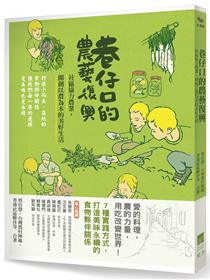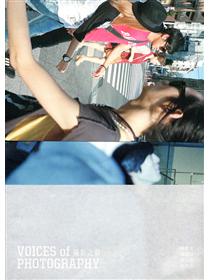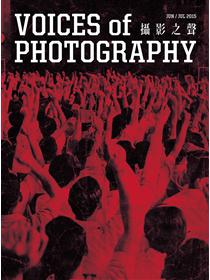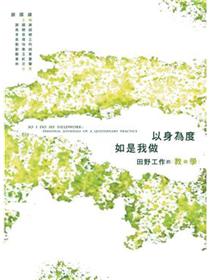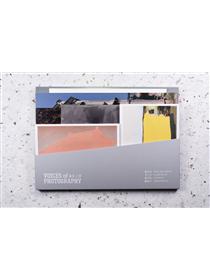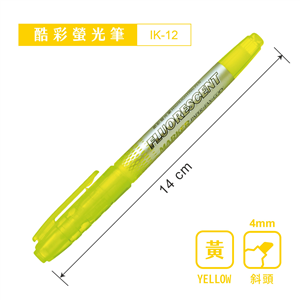



Voices of Photography 攝影之聲
Issue 15 : 影像的左邊
The Left Side of Images
攝影,做為一種運動方法,本期我們關注一個批判視野——左翼——在影像上的實踐與歷史意義。
影像有「左」、「右」之分嗎?這是我們提出的第一個問題。當資本主義襲捲全球,成為人們意識形態與生存依附的重心,攝影如何左翼?如果攝影有「左」、「右」之分,那麼,影像的左邊會是什麼呢?左翼的影像又如何成立?我們思索這個命題,提出許多問號。在世界向右傾斜之際,我們質問攝影的反叛能量和政治實踐,試圖透過本期專題摸索、探訪。也許在暗箱某處,依然有一個遊蕩的幽靈,一絲理想主義星火,以及一段歷史洗印的痕跡。
在這期的《攝影之聲》中,何經泰的《白色檔案》召喚台灣五○年代白色恐怖時期幽禁的紅色青春,逆溯一段晦暗的台灣歷史;林深靖回首台灣左翼崎嶇的路徑興衰,以及國際左翼的當前發展;張世倫透過八○年代《人間》雜誌帶動的現實主義攝影風潮,論析左翼理念的人道關懷對台灣紀實攝影的影響與「後人間」時代的攝影變貌;關曉榮從自身攝影工作實踐出發,探索影像的「左」、「右」語彙;郭力昕梳理台灣紀錄片的左翼課題,並同時訪談北京電影學院教授張獻民,側寫當代「左翼紀錄片」的中國語境;顧錚深掘中國「文革」時期左派影像的產製與意識形態塑型,對這場極左運動的視覺政治提出深入的批判分析;李威儀尋究1967年香港「六七暴動」期間左翼陣營出版的多本攝影畫刊,一探這起香港史上最大規模左翼鬥爭風暴中的影像史觀;金子隆一以六○年代世界反叛浪潮下的日本「新左翼」反體制運動,思索日本攝影的抵抗理路。而本期夾帶的《SHOUT》,則重現1930年代初由「台灣赤色救援會」編寫並遭日本殖民政府查禁的無產階級宣傳小冊——《三字集》,重讀台共黨人留下的歷史詩篇。
此外,五月我們也在東京策劃了一次難得的對談,邀請到在1968年間、記錄日本最具代表性的重要學生運動——日大及東大「全共鬥」——的資深攝影家北井一夫和渡辺眸,回顧他們親歷見證的一段過激革命年代。這也是屬於當時極少數得以進入學生組織內部拍攝的兩人,在近半個世紀後,首度對於日本這場歷史性的學潮鬥爭展開的影像對話。
在Artist's Showcase單元,我們則特別專訪中國攝影家徐勇,刊載了他近期發表的最新作品——《底片》。1989年,徐勇在北京天安門廣場拍下了中國最為浩大的民主運動後,終於在今年將這些影像以負片形式集結顯影。即使26年過去,「六四」至今依舊是中國當局的禁忌話題。廣場上的靈魂仍在怒吼,而我們將試著在一幀幀的負像畫面裡,尋找歷史的正像與攝影的含意。
謝謝正在閱讀的你又與我們一起迎接新的一期,這些日子以來我們透過這本雜誌聚在一起,探求攝影的本質、歷史與文化關係,成為影像思考裡的一道新的力量。這條獨立出版的路雖仍然走得艱辛,但希望我們能走得悠長。在這裡也再次誠摯地向支持著這份刊物前行的所有讀者伙伴們致意。
//////////////////////////////////////
In this issue of VOP, we explore the idea of photography as a channel of movement, focusing on the critical analysis of a particular point-of-view — the left wing — and its actualization and importance in the history of images.
The first question we raised is: are there “Leftist” and “Rightist” images? How can Leftist images be amongst the waves of global capitalism, which people center their opinions and survival on? If there are “Leftist” and “Rightist” images, what are Leftist images then? How are Leftist images established? As we examine this issue, many questions remain to be answered. As the world tilts to the Right, we question photography’s ability to revolt and its political impact. Through our articles in this issue, we seek for that elusive spirit that might still reside in some long forgotten corner, and uncover some traces left behind in our history that might give us a hint of the answers to our questions.
In this issue, Ho Ching-Tai’s White Terror Files calls out to the souls locked up during the period of martial law (also known as the White Terror period) and traces back to a time of darkness in the history of Taiwan; Lin Shen-Chin looks back on the ups and downs of the Left Wing movement in Taiwan, and the current developments of the Left Wing movement on the international stage; Chang Shih-Lun examines the realist photography movement in the 1980s, brought about by the Ren Jian magazine, and how the humanist compassion of the Left influenced Taiwanese documentary photography, and changes to the photography landscape in the post-Ren Jian era; Guan Xiao-Rong takes a look at what Left and Right mean in the context of photography, based on his own experiences in the photography field; Kuo Li-Hsin explores the Left Wing issues in Taiwan documentaries, and interviews Beijing Photography Institute’s Professor Zhang Xian-Min, examining modern Leftist documentaries in China’s context. Gu Zheng uncovers the production and ideology behind the Leftist images in China’s Cultural Revolution era, and gives an in-depth critique and analysis of the extreme Leftist visual propaganda during that period of time. Lee Wei-I seeks out a series of illustrated propaganda books published by the Left during the Hong Kong 1967 Leftist Riots and gives us a glimpse into one of the most turbulent periods of time in Hong Kong’s Leftist history. Kaneko Ryuichi offers some insights on Japan’s photographic resistance through a closer look at the new Leftist “Anti-Establishment” Movement of the 1960s. In this issue’s SHOUT, we recreate a proletariat propaganda publication Three Word Book by the Taiwan MOPR that was banned by the Japanese colonial government. A look at the mark left behind by the the Taiwan Communists.
In addition, we were very fortunate to have the rare opportunity to speak with the photographers of the 1968 Tokyo University Zenkyoto Protests, Kitai Kazuo and Watanabe Hitomi, who documented one of the most iconic student protests in Japan. We talked to them about their experiences and accounts of that turbulent era 50 years ago. This interview marked the first time that the two of them have shared their experiences as there were very few photographers who were allowed into the student body to document the movement.
This issue of Artist’s Showcase features a special interview with Chinese photographer Xu Yong, along with selections from his recently published works Negatives. After shooting the biggest democratic movement in the history of contemporary China, Beijing’s 1989 Tiananmen Square protests, Xu Yong has finally published these images this year in the form of negatives, where the passion on the Square is frozen in time. Even after 26 years, “June 4th“ is still a taboo in China. In this series of negatives, we search frame by frame for the positive images and the meaning of photography.
Thank you once again for being with us this issue, as you have in our past issues. We hope you will continue to join us as we journey on to ponder photography’s essence, and its historical and cultural relationship and impact. This is a new train of thought in photography literature. Although independent publishing is a difficult path, we hope that, with your support, we will be able to continue this for a long time. From the bottom of our hearts, thank you for supporting this magazine.
作者簡介:
《Voices of Photography 攝影之聲》是一份攝影藝術獨立刊物,2011年9月在台灣創刊。每期介紹當代攝影作品與攝影藝術家,藉由訪問藝術家、藝廊、策展人、出版人與相關藝術工作者,以及提供攝影專欄、攝影書評與攝影展覽資訊的介紹,探索攝影藝術的創作概念、文化與思潮。曾獲文化部2013年第37屆金鼎獎雜誌類最佳主編獎及2014年第38屆金鼎獎人文藝術類雜誌優良出版品推薦。
Voices of Photography is an independent publication dedicated to contemporary photography. Launched in September 2011 in Taiwan, VOP features contemporary photographers and artists, as well as interviews with artists, gallerists, curators, and publishers and other related professionals worldwide, to share and explore the creativity and philosophy of photography.
www.vopmagazine.com
www.facebook.com/vopmagazine
 6收藏
6收藏
優惠價: 9 折, NT$ 351 NT$ 390
限量商品已售完
Voices of Photography 攝影之聲
Issue 15 : 影像的左邊
The Left Side of Images
攝影,做為一種運動方法,本期我們關注一個批判視野——左翼——在影像上的實踐與歷史意義。
影像有「左」、「右」之分嗎?這是我們提出的第一個問題。當資本主義襲捲全球,成為人們意識形態與生存依附的重心,攝影如何左翼?如果攝影有「左」、「右」之分,那麼,影像的左邊會是什麼呢?左翼的影像又如何成立?我們思索這個命題,提出許多問號。在世界向右傾斜之際,我們質問攝影的反叛能量和政治實踐,試圖透過本期專題摸索、探訪。也許在暗箱某處,依然有一個遊蕩的幽靈,一絲理想主義星火,以及一段歷史洗印的痕跡。
在這期的《攝影之聲》中,何經泰的《白色檔案》召喚台灣五○年代白色恐怖時期幽禁的紅色青春,逆溯一段晦暗的台灣歷史;林深靖回首台灣左翼崎嶇的路徑興衰,以及國際左翼的當前發展;張世倫透過八○年代《人間》雜誌帶動的現實主義攝影風潮,論析左翼理念的人道關懷對台灣紀實攝影的影響與「後人間」時代的攝影變貌;關曉榮從自身攝影工作實踐出發,探索影像的「左」、「右」語彙;郭力昕梳理台灣紀錄片的左翼課題,並同時訪談北京電影學院教授張獻民,側寫當代「左翼紀錄片」的中國語境;顧錚深掘中國「文革」時期左派影像的產製與意識形態塑型,對這場極左運動的視覺政治提出深入的批判分析;李威儀尋究1967年香港「六七暴動」期間左翼陣營出版的多本攝影畫刊,一探這起香港史上最大規模左翼鬥爭風暴中的影像史觀;金子隆一以六○年代世界反叛浪潮下的日本「新左翼」反體制運動,思索日本攝影的抵抗理路。而本期夾帶的《SHOUT》,則重現1930年代初由「台灣赤色救援會」編寫並遭日本殖民政府查禁的無產階級宣傳小冊——《三字集》,重讀台共黨人留下的歷史詩篇。
此外,五月我們也在東京策劃了一次難得的對談,邀請到在1968年間、記錄日本最具代表性的重要學生運動——日大及東大「全共鬥」——的資深攝影家北井一夫和渡辺眸,回顧他們親歷見證的一段過激革命年代。這也是屬於當時極少數得以進入學生組織內部拍攝的兩人,在近半個世紀後,首度對於日本這場歷史性的學潮鬥爭展開的影像對話。
在Artist's Showcase單元,我們則特別專訪中國攝影家徐勇,刊載了他近期發表的最新作品——《底片》。1989年,徐勇在北京天安門廣場拍下了中國最為浩大的民主運動後,終於在今年將這些影像以負片形式集結顯影。即使26年過去,「六四」至今依舊是中國當局的禁忌話題。廣場上的靈魂仍在怒吼,而我們將試著在一幀幀的負像畫面裡,尋找歷史的正像與攝影的含意。
謝謝正在閱讀的你又與我們一起迎接新的一期,這些日子以來我們透過這本雜誌聚在一起,探求攝影的本質、歷史與文化關係,成為影像思考裡的一道新的力量。這條獨立出版的路雖仍然走得艱辛,但希望我們能走得悠長。在這裡也再次誠摯地向支持著這份刊物前行的所有讀者伙伴們致意。
//////////////////////////////////////
In this issue of VOP, we explore the idea of photography as a channel of movement, focusing on the critical analysis of a particular point-of-view — the left wing — and its actualization and importance in the history of images.
The first question we raised is: are there “Leftist” and “Rightist” images? How can Leftist images be amongst the waves of global capitalism, which people center their opinions and survival on? If there are “Leftist” and “Rightist” images, what are Leftist images then? How are Leftist images established? As we examine this issue, many questions remain to be answered. As the world tilts to the Right, we question photography’s ability to revolt and its political impact. Through our articles in this issue, we seek for that elusive spirit that might still reside in some long forgotten corner, and uncover some traces left behind in our history that might give us a hint of the answers to our questions.
In this issue, Ho Ching-Tai’s White Terror Files calls out to the souls locked up during the period of martial law (also known as the White Terror period) and traces back to a time of darkness in the history of Taiwan; Lin Shen-Chin looks back on the ups and downs of the Left Wing movement in Taiwan, and the current developments of the Left Wing movement on the international stage; Chang Shih-Lun examines the realist photography movement in the 1980s, brought about by the Ren Jian magazine, and how the humanist compassion of the Left influenced Taiwanese documentary photography, and changes to the photography landscape in the post-Ren Jian era; Guan Xiao-Rong takes a look at what Left and Right mean in the context of photography, based on his own experiences in the photography field; Kuo Li-Hsin explores the Left Wing issues in Taiwan documentaries, and interviews Beijing Photography Institute’s Professor Zhang Xian-Min, examining modern Leftist documentaries in China’s context. Gu Zheng uncovers the production and ideology behind the Leftist images in China’s Cultural Revolution era, and gives an in-depth critique and analysis of the extreme Leftist visual propaganda during that period of time. Lee Wei-I seeks out a series of illustrated propaganda books published by the Left during the Hong Kong 1967 Leftist Riots and gives us a glimpse into one of the most turbulent periods of time in Hong Kong’s Leftist history. Kaneko Ryuichi offers some insights on Japan’s photographic resistance through a closer look at the new Leftist “Anti-Establishment” Movement of the 1960s. In this issue’s SHOUT, we recreate a proletariat propaganda publication Three Word Book by the Taiwan MOPR that was banned by the Japanese colonial government. A look at the mark left behind by the the Taiwan Communists.
In addition, we were very fortunate to have the rare opportunity to speak with the photographers of the 1968 Tokyo University Zenkyoto Protests, Kitai Kazuo and Watanabe Hitomi, who documented one of the most iconic student protests in Japan. We talked to them about their experiences and accounts of that turbulent era 50 years ago. This interview marked the first time that the two of them have shared their experiences as there were very few photographers who were allowed into the student body to document the movement.
This issue of Artist’s Showcase features a special interview with Chinese photographer Xu Yong, along with selections from his recently published works Negatives. After shooting the biggest democratic movement in the history of contemporary China, Beijing’s 1989 Tiananmen Square protests, Xu Yong has finally published these images this year in the form of negatives, where the passion on the Square is frozen in time. Even after 26 years, “June 4th“ is still a taboo in China. In this series of negatives, we search frame by frame for the positive images and the meaning of photography.
Thank you once again for being with us this issue, as you have in our past issues. We hope you will continue to join us as we journey on to ponder photography’s essence, and its historical and cultural relationship and impact. This is a new train of thought in photography literature. Although independent publishing is a difficult path, we hope that, with your support, we will be able to continue this for a long time. From the bottom of our hearts, thank you for supporting this magazine.
作者簡介:
《Voices of Photography 攝影之聲》是一份攝影藝術獨立刊物,2011年9月在台灣創刊。每期介紹當代攝影作品與攝影藝術家,藉由訪問藝術家、藝廊、策展人、出版人與相關藝術工作者,以及提供攝影專欄、攝影書評與攝影展覽資訊的介紹,探索攝影藝術的創作概念、文化與思潮。曾獲文化部2013年第37屆金鼎獎雜誌類最佳主編獎及2014年第38屆金鼎獎人文藝術類雜誌優良出版品推薦。
Voices of Photography is an independent publication dedicated to contemporary photography. Launched in September 2011 in Taiwan, VOP features contemporary photographers and artists, as well as interviews with artists, gallerists, curators, and publishers and other related professionals worldwide, to share and explore the creativity and philosophy of photography.
www.vopmagazine.com
www.facebook.com/vopmagazine

※ 二手徵求後,有綁定line通知的讀者,
該二手書結帳減5元。(減5元可累加)
請在手機上開啟Line應用程式,點選搜尋欄位旁的掃描圖示
即可掃描此ORcode
|
||||||||||||||||||
|
||||||||||||||||||
|
||||||||||||||||||


